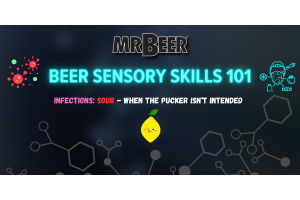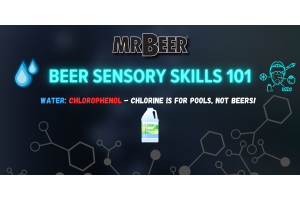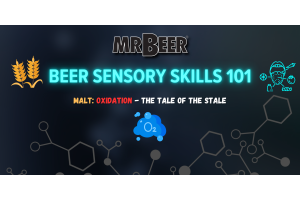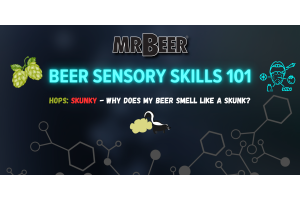The Hazy IPA

Hazy IPAs have been trending for the last few years, and though they've carved out a substantial space in the craft beer world, they are a nameless darling that can be tricky to ask for at your local beer spot.
What do I ask for?
By BJCP standards, hazy IPAs are a "Specialty IPA," and not an "American IPA" as many assume because of the style's regional ties. The BJCP Guidelines define the common element of Specialty IPAs as a "balance and overall impression of an IPA (typically, an American IPA) but with some minor weak." If a hazy IPA was entered in a BJCP competition as an American IPA, it would fail for its lack of hop bitterness, among other attributes. The names "Vermont-Style IPA" and "New England IPA" - though popular - are not names for actual recognized styles. I am currently choosing to call these beers "hazy IPAs" because it seems a smart catchall, but even this moniker misses the mark. The haze is simply a byproduct of the brewing process these beers share, and is not/should not be the primary goal when brewing. Hazy IPAs are better known for their tropical, juicy hop flavor/aroma and smooth mouthfeel. So, you'd be better off calling them TropiSmoothie IPAs if the goal is to call them by their most remarkable characteristics. Don't be confused by my last remark, as there are Smoothie or Milkshake IPAs out there too. But these IPAs are brewed with lactose sugar added to create a thick, milky, sweet beer that looks like a milkshake or smoothie. So, if I had to advise you on what to ask for – until the BJCP gives this craft favorite a style name all its own – I'd say an IPA with juicy, tropical hops (that provide a restrained bitterness), smooth mouthfeel, and potentially a hazy/cloudy body. Sound like a mouthful? It is. Still it's better than asking for styles that don't exist or asking for a murky beer, when that's not the primary characteristic you're searching for.
How would you describe this beer?
When I'm standing at the bar listening to some poor sap trying to order a hazy IPA, here are the seemingly effective descriptors used most frequently: "fruity, citrusy flavor and a creamy, soft mouthfeel" "juicy hop character with restrained bitterness" "hop flavor & aroma like fruit juice" "smooth & tropical" "more hop flavor, less bitterness" While I get the desire to just say "pulpy looking – like grapefruit juice," there are so many cloudy beers that don't taste anything like a hazy IPA.
Where did it come from?
Though hazy IPAs have only become popular or "trendy" over the last few years, they've been around well over a decade. The original hazy IPA is The Alchemist's "Heady Topper," which they began serving after their opening in 2003. The Alchemist's John Kimmich became the brew master at Vermont Pub & Brewery in 1994. He learned all about craft beer, and acquired the yeast which gives Heady Topper much of its character, from Greg Noonan, founder of Vermont Pub & Brewery. Hazy IPAs are often referred to as "New England IPAs," "NEIPAs," or "Vermont-style IPAs" because of this origin. How do hazy IPAs get that haze? As mentioned before, the haze is in fact NOT the point of a hazy IPA. It is a result of the measures taken to produce the right juicy hop aroma and flavor with a smooth mouthfeel. But how? - Yeast strains that don't readily flocculate (the yeast do not simply sink to the bottom) - A higher-protein malt bill, as in more oats and wheat that have been added to achieve that smooth body - Late hop addition, which puts hop polyphenols in suspension - Extreme dry-hopping regimen (same reason as above) Notflour. Seriously, stop it.
How do they get that mouthfeel?
- Water treatment (high ratio of chloride to sulfate) - Mash process (slightly elevated mash temperatures to promote body) - Adding flaked wheat and flaked oats - Unique yeast strains – Vermont Ale yeast or London Ale III (the ones that don't readily flocculate, as mentioned above)
What does it take to get that big, juicy, tropical hop taste?
- Not adding hops during a "boil" – you'll lose that fresh, bold aroma - Using super fruit-forward hops like Citra, Mosaic, Galaxy, Amarillo, El Dorado - Using a huge dry hop charge – some breweries use up to three dry-hop additions over a 7-8 day period after primary fermentation to lock in juicy hop aroma – keeping it hop-forward but not bitter.
Why do we like hazy IPAs so much if they don't taste like IPAs?
Because we drink what we like! (Sorry, 90s nostalgia.) The hop rates in hazy IPAs are usually equal to or even higher than other IPAs – so any true hop head will still get their fix. But for those who couldn't even name a hop if asked, the juicy hop flavor without all the bitterness is a whole lot more approachable. Sure, all this hopping action causes hazy IPAs to have a shorter shelf life, but I feel confident craft beer fans don't take issue with that one downside for all the fresh, juicy flavor.





